Maria Vasardani
Target Word Masking for Location Metonymy Resolution
Oct 30, 2020

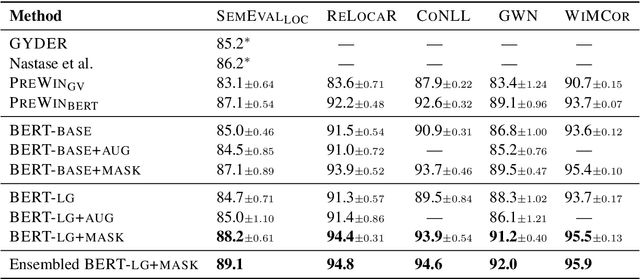
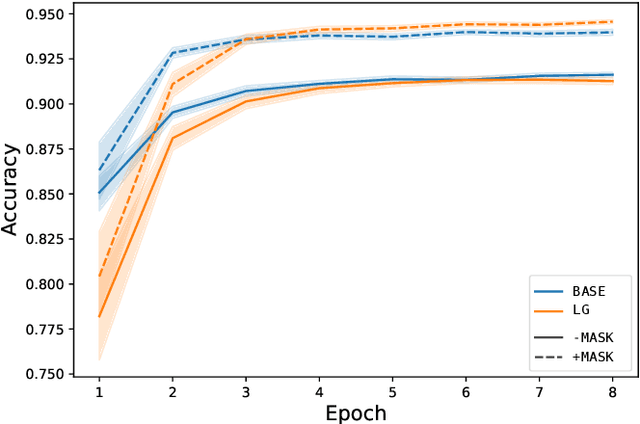
Abstract:Existing metonymy resolution approaches rely on features extracted from external resources like dictionaries and hand-crafted lexical resources. In this paper, we propose an end-to-end word-level classification approach based only on BERT, without dependencies on taggers, parsers, curated dictionaries of place names, or other external resources. We show that our approach achieves the state-of-the-art on 5 datasets, surpassing conventional BERT models and benchmarks by a large margin. We also show that our approach generalises well to unseen data.
Disambiguating fine-grained place names from descriptions by clustering
Aug 17, 2018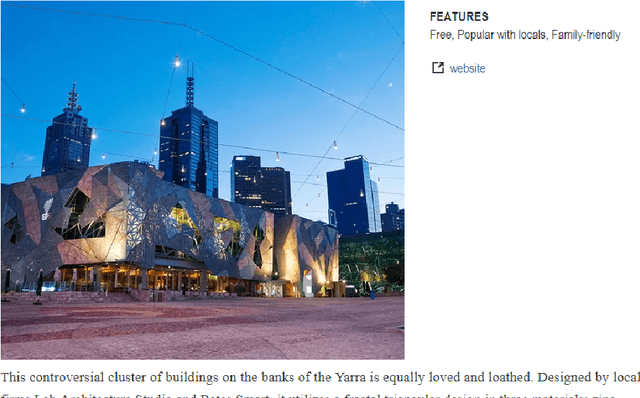


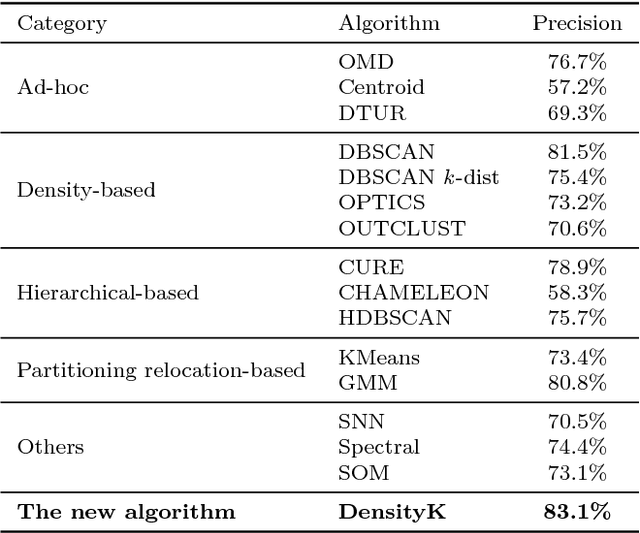
Abstract:Everyday place descriptions often contain place names of fine-grained features, such as buildings or businesses, that are more difficult to disambiguate than names referring to larger places, for example cities or natural geographic features. Fine-grained places are often significantly more frequent and more similar to each other, and disambiguation heuristics developed for larger places, such as those based on population or containment relationships, are often not applicable in these cases. In this research, we address the disambiguation of fine-grained place names from everyday place descriptions. For this purpose, we evaluate the performance of different existing clustering-based approaches, since clustering approaches require no more knowledge other than the locations of ambiguous place names. We consider not only approaches developed specifically for place name disambiguation, but also clustering algorithms developed for general data mining that could potentially be leveraged. We compare these methods with a novel algorithm, and show that the novel algorithm outperforms the other algorithms in terms of disambiguation precision and distance error over several tested datasets.
Geo-referencing Place from Everyday Natural Language Descriptions
Oct 09, 2017
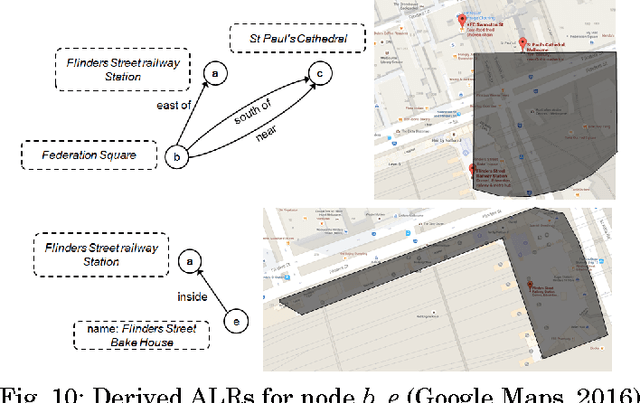


Abstract:Natural language place descriptions in everyday communication provide a rich source of spatial knowledge about places. An important step to utilize such knowledge in information systems is geo-referencing all the places referred to in these descriptions. Current techniques for geo-referencing places from text documents are using place name recognition and disambiguation; however, place descriptions often contain place references that are not known by gazetteers, or that are expressed in other, more flexible ways. Hence, the approach for geo-referencing presented in this paper starts from a place graph that contains the place references as well as spatial relationships extracted from place descriptions. Spatial relationships are used to constrain the locations of places and allow the later best-matching process for geo-referencing. The novel geo-referencing process results in higher precision and recall compared to state-of-art toponym resolution approaches on several tested place description datasets.
 Add to Chrome
Add to Chrome Add to Firefox
Add to Firefox Add to Edge
Add to Edge